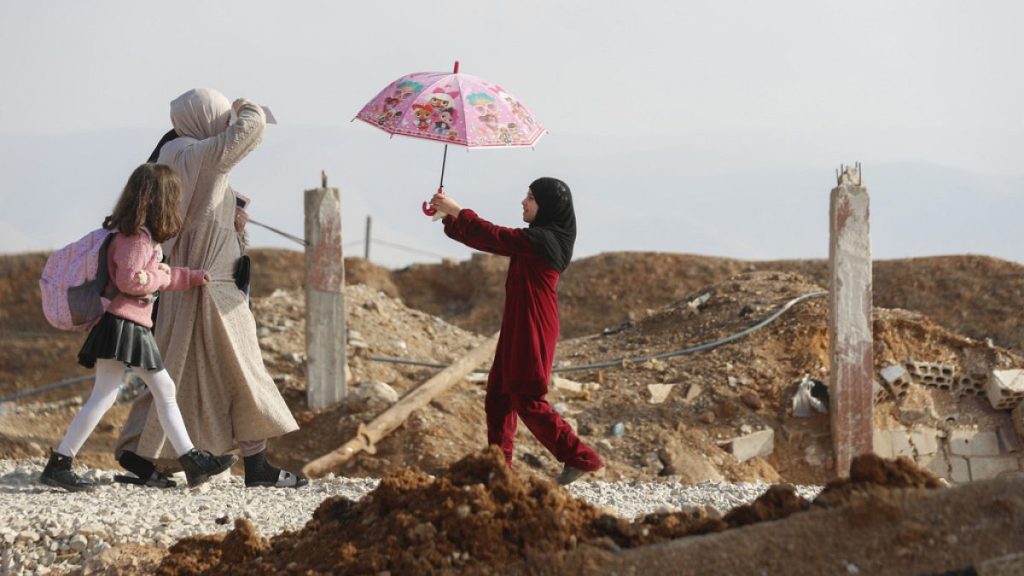The November 27th ceasefire agreement between Israel and Hezbollah, while fragile and marked by repeated violations, is expected to endure, according to analysts. The agreement mandates Hezbollah’s immediate cessation of hostilities in southern Lebanon and Israel’s withdrawal of forces from the region, transferring control to the Lebanese army and UN peacekeepers within 60 days. However, implementation has been slow and contested. Israel has only withdrawn from two towns and continues to strike alleged Hezbollah targets, accusing the group of ongoing military activity. Hezbollah, significantly weakened by the 14-month conflict, threatens renewed hostilities if Israel does not fully withdraw by the deadline. Despite the tense situation, the agreement’s ambiguity and flexibility, coupled with Hezbollah’s weakened state, contribute to its likely continuation.
The ceasefire agreement, brokered by the United States, followed a period of intense conflict triggered by Hezbollah’s rocket attacks on Israel in October 2023, one day after the Hamas attack that initiated the ongoing Gaza war. The ensuing Israeli air and ground assaults in Lebanon caused widespread devastation, resulting in over 4,000 deaths, including hundreds of civilians, and displacing over one million people at the conflict’s peak. Hezbollah’s rocket fire also impacted Israel, forcing around 60,000 people from their homes and resulting in 76 fatalities, including 31 soldiers. The conflict exacted a heavy toll on both sides, underscoring the need for a ceasefire.
The core tenets of the ceasefire agreement include a halt to “offensive” military actions by both parties, with the caveat of self-defense – a provision open to interpretation and a source of contention. The Lebanese army is tasked with preventing future attacks on Israel by Hezbollah and other militant groups, as well as dismantling Hezbollah’s infrastructure and weaponry in southern Lebanon, a mandate potentially extending to the entire country. The agreement’s implementation is overseen by the United States, France, Israel, Lebanon, and UNIFIL, the UN peacekeeping force in Lebanon. The central challenge lies not in the ceasefire’s survival but in how it will ultimately be implemented and interpreted by the involved parties.
Despite the ceasefire, both sides accuse each other of violations. Israel continues airstrikes against purported militant sites, while Hezbollah alleges over 800 ground and air attacks by Israel since the ceasefire began. These attacks, according to Lebanon, hinder the Lebanese army’s deployment and efforts to uphold the agreement. Israel, conversely, accuses Hezbollah of hundreds of violations, including moving ammunition, attempted attacks on Israeli soldiers, and rocket launches. Israel justifies its ongoing strikes by claiming they target Hezbollah infrastructure, while Lebanese authorities report the destruction of civilian structures as well. The ongoing accusations highlight the fragile nature of the truce and the challenges of implementing it.
The pace of Israel’s withdrawal from Lebanese towns has been slower than anticipated, attributed by Israel to insufficient Lebanese army forces to assume control, a claim disputed by Lebanon. Israel maintains it prioritizes security and is satisfied with the Lebanese army’s control in areas it has vacated. The 60-day withdrawal deadline is not considered absolute by Israel, suggesting the need for Lebanon to bolster its troop deployment before further transfers of control occur. Hezbollah has indicated a potential resumption of hostilities if Israeli forces remain beyond the 60-day mark, but currently refrains from action to allow the Lebanese government to enforce the agreement.
The war’s final months significantly weakened Hezbollah, impacting its leadership, weaponry, and manpower. The fall of Bashar al-Assad in Syria further compounded the group’s challenges by disrupting a key weapons supply route from Iran. This power imbalance favors Israel, potentially allowing for greater freedom of action after the 60-day period. While Hezbollah, in its weakened state, has a vested interest in maintaining the agreement despite Israeli violations, the potential for future low-intensity conflict remains. Even with a full Israeli withdrawal, sporadic Israeli airstrikes within Lebanon, similar to those in Syria, are a possibility. The long-term stability of the region hinges on the delicate balance of power and the continued adherence to the ceasefire, however tenuous it may be.














